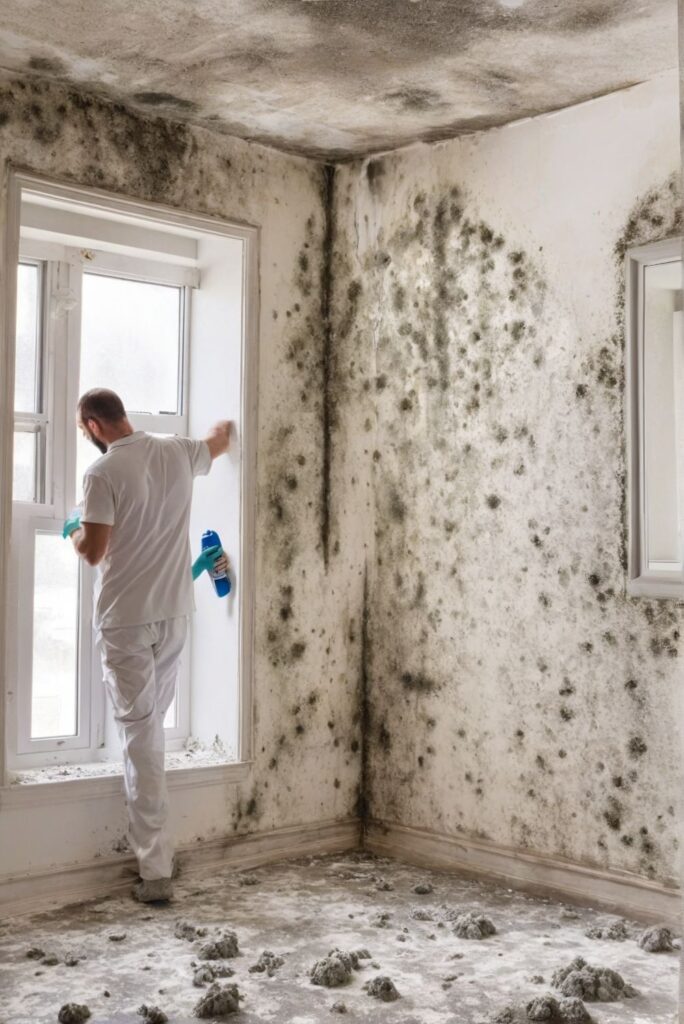Living in a humid climate can be a double-edged sword. On one hand, the warm weather and sunshine are wonderful, but on the other hand, it can create a breeding ground for mold. If you’re like me and want to keep your home mold-free, then you’re in the right place. In this guide, I’ll share some easy ways to prevent mold in humid climates that have worked wonders for me.
Understanding Mold Growth
First things first, let’s talk about why mold loves humid climates. Mold spores are everywhere in the environment, and they thrive in moisture. When the humidity level rises above 60%, mold can begin to grow on surfaces such as walls, ceilings, and floors. This is particularly true in areas that are poorly ventilated, like basements and bathrooms.
Identifying Problem Areas
Before taking action, it’s crucial to identify the spots in your home that are more prone to mold growth. Common areas include:
- Bathrooms
- Kitchens
- Basements
- Around windows and doors
- Heating and cooling vents
Easy Ways to Prevent Mold
Now, let’s dive into some practical tips to keep your home mold-free.
1. Control Humidity Levels
One of the most effective ways to prevent mold is to keep humidity levels in check. Consider investing in a dehumidifier to help reduce moisture in the air. Ideally, indoor humidity should be kept between 30% and 50%. Regularly check humidity levels using a hygrometer to ensure you’re staying within this range.
2. Ventilation is Key
Proper ventilation can make a significant difference. Ensure that areas like bathrooms and kitchens are well-ventilated. Use exhaust fans when cooking or showering, and keep windows open whenever possible. This will help to circulate air and reduce humidity.
3. Fix Leaks Promptly
Leaky pipes or roofs can contribute to mold growth. Make it a habit to regularly inspect your home for leaks and repair them as soon as possible. This not only prevents mold but also saves on costly water bills!
4. Insulate Your Home
Insulation can help to prevent condensation, which is a common cause of mold. Make sure that your walls, roof, and floors are adequately insulated. Pay special attention to areas where pipes run through walls, as these can often be cold spots that invite condensation.
5. Use Mold-Resistant Products
When renovating or making repairs, consider using mold-resistant products. This includes mold-resistant drywall, paint, and even caulking. These materials are specially designed to resist mold growth and can provide an extra layer of protection for your home.
Cleaning and Maintenance Tips
Keeping your home clean is also crucial in preventing mold. Here are some cleaning tips that have worked for me:
Regular Cleaning Routines
Establish a cleaning routine that includes dusting and vacuuming at least once a week. Use a vacuum with a HEPA filter to trap mold spores and other allergens effectively.
Wash Fabrics Regularly
Items such as curtains, bedding, and towels can harbor mold spores. Make it a habit to wash these fabrics regularly, especially if they become damp. Dry them thoroughly before putting them back in place.
Use Vinegar for Cleaning
White vinegar is a natural mold killer. Use it to clean surfaces that are prone to mold growth. Spray undiluted vinegar on the affected areas and let it sit for at least an hour before wiping it off.
Creating a Mold-Free Environment
To further help in preventing mold, consider these additional tips:
Declutter Your Space
Less clutter means fewer places for mold to hide. Regularly go through your belongings and donate or discard items you no longer need. This not only helps with mold prevention but also creates a more organized living space.
Monitor Indoor Plants
If you love having indoor plants, be cautious as overwatering can lead to mold growth. Ensure that pots have proper drainage and avoid letting water sit in the saucer.
Educate Your Family
Make sure everyone in your household is aware of mold prevention techniques. Encourage them to report any leaks or damp spots immediately so that action can be taken quickly.
Frequently Asked Questions
What is mold and why is it a problem?
Mold is a type of fungus that can grow almost anywhere, given the right conditions. It can cause health issues, including respiratory problems and allergies, and can damage your home.
How can I tell if I have mold in my home?
You might notice a musty smell or see visible mold growth, often black or green spots on walls or ceilings. If you suspect mold, it’s best to have it professionally assessed.
Can I remove mold myself?
For small areas, you can typically clean mold yourself using vinegar or a commercial mold remover. However, for larger infestations, it’s advisable to hire professionals.
Final Thoughts
Keeping your home free of mold in a humid climate may seem challenging, but with a few proactive steps, it can be managed effectively. By controlling humidity levels, ensuring proper ventilation, and maintaining a clean environment, you can create a mold-free haven. Remember, prevention is always better than cure!






